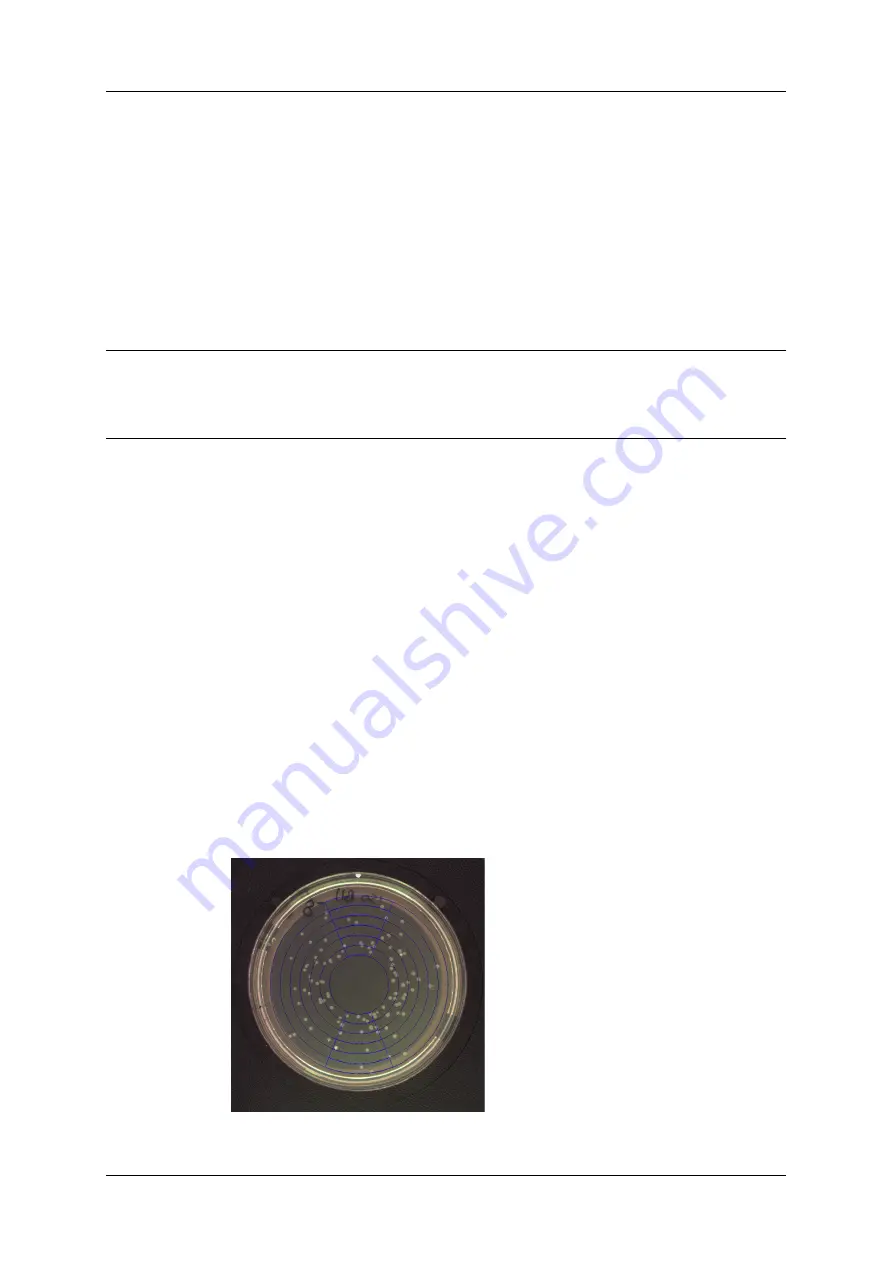
Creating a new batch
In order to use the Classification tab, you will need a sample image to work with:
1. Insert a typical plate from the batch into aCOLyte3 – see
2. Capture the image – see
The Classification tab in the Batch Designer for counting colonies allows you to:
l
set the frame – see
l
configure a simple total plate count – see
l
set the properties of the markers used to identify detected colonies on the image – see
Note
By default, if you base a new batch on an existing batch, it will use the same total plate count
settings as the existing batch (though you can change them if required). If you are creating a
completely new batch, you will not be able to accept it for taking measurements until you
have defined a total plate count.
Frame
The following sections tell you about:
l
Choosing the type of frame to use
l
Adjusting the position and size of frames
Choosing the type of frame to use
The ‘frame’ defines the area within which colonies will be counted. The choice of frames
depends on the type of batch:
l
Pour Plate: the frame can be circular, rectangular or a single sector of a circle
occupying 1/10, 1/8, 1/4 or 1/2 of the total area.
l
Spiral Plate:
l
Whole Frame – Whole Frame: the frame is circular
l
Whole Frame – Annulus Frame: the frame consists of two concentric circles
l
Two Sector: a series of concentric circles, with two opposite highlighted sectors. For
example:
26
aCOLyte3
User Manual
Содержание SYNBIOSIS aCOLyte3
Страница 2: ......
Страница 6: ......
Страница 12: ...Getting started 6 aCOLyte3 User Manual...
Страница 22: ...Capturing images 16 aCOLyte3 User Manual...
Страница 66: ...Creating a new batch 60 aCOLyte3 User Manual...
Страница 96: ...Working with results 90 aCOLyte3 User Manual...
Страница 108: ...Configuring aCOLyte3 102 aCOLyte3 User Manual...






























